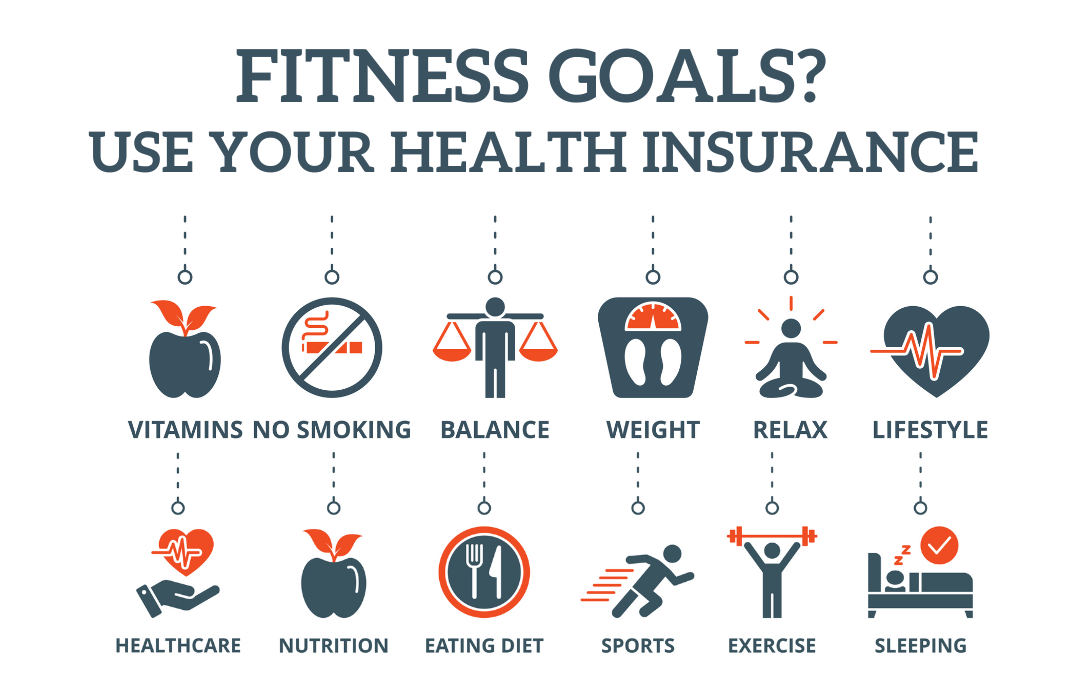Imagine saving hundreds of dollars on a premium gym membership, getting personalized nutrition advice, and even enrolling in stress management workshops, all because you took the time to dig a little deeper into your health insurance benefits. What if achieving your fitness goals could be more attainable and cost-effective than you ever thought possible, thanks to the very health insurance policy you’ve been paying into? Now, you can unlock the myriad of ways your health insurance can serve as an unexpected yet invaluable ally in your quest for improved physical well-being. Here are 10 tips for using health insurance to support your fitness goals.
1. Examine Your Insurance Policy’s Fine Print
Exploring the small print of your health insurance policy can reveal hidden perks to support a healthy and fit lifestyle. From discounted gym memberships to budget-friendly consultations with dietitians, these advantages often go unnoticed. Additionally, knowing the type of insurance plan you have—such as a Health Maintenance Organization (HMO) or a Preferred Provider Organization (PPO)—can dramatically influence which benefits are open to you. Rather than merely skimming through your policy, scrutinize its every clause. This initial effort can be a critical first step toward a cost-effective, well-informed fitness journey.
2. Prioritize Preventative Health Services
Another tip for using health insurance to support your fitness goals is to focus on prevention and self-care. Consistently monitoring your health is one of the cornerstones of any effective fitness journey. Most insurance plans offer a range of preventative services like annual physical check-ups and cholesterol screenings, often at no extra cost. Such services serve as early warning systems for potential health issues and provide a baseline data set to guide your fitness objectives.
For instance, understanding your blood pressure levels or body mass index can offer you targeted goals for improvement. Integrating these preventative measures into your fitness strategy ensures that you’re not just aiming for superficial changes but are engaged in a holistic approach to wellness.
3. Evaluate Plan Flexibility for Diverse Fitness Options
Health insurance plans often differ in flexibility when choosing healthcare providers and services. This can directly impact how you meet your fitness goals. For example, some plans may cover the cost of joining a specific gym or attending certain wellness workshops, while others might offer a more comprehensive range of options.
Understanding your plan type, like an Exclusive Provider Organization (EPO), can help you tailor your fitness journey accordingly. Familiarizing yourself with EPO pros and cons can provide valuable insights into whether this type of plan complements your wellness objectives or if another type might be more suitable.
4. Leverage Telehealth Services for Convenient Consultations
In our digitally-connected world, you don’t always need to visit a doctor’s office for medical advice. Many health insurance plans offer telehealth services, providing a convenient platform to consult healthcare providers about your fitness regimen. Whether you’re seeking nutritional advice, coping strategies for exercise-induced stress, or even physical therapy exercises for persistent back pain, telehealth consultations can be both time-saving and enlightening.
5. Take Advantage of Employee Wellness Programs
If your health insurance is provided through your employer, you may have access to an array of wellness programs that align perfectly with your fitness objectives. These could range from office-sponsored gym memberships and yoga classes to workshops on stress management and mental health support. Participation in these programs often comes at a reduced cost or may even be fully covered by your insurance plan. Moreover, you’ll find a built-in support system in the form of like-minded coworkers.
6. Capitalize on Family and Group Discounts

Another tip for using health insurance to support your fitness goals is to capitalize on family and group discounts. Many insurance plans offer benefits beyond individual policyholders. For instance, family plans might offer discounted rates for family gym memberships or access to group classes on nutrition and well-being. By enlisting your family or friends in the same insurance network, you can cultivate a communal environment focused on health and fitness. This allows you to split costs and offers the invaluable benefit of mutual encouragement and accountability.
7. Monitor and Leverage Reward Points and Incentives
Some insurance plans feature reward programs that grant points for healthy activities such as completing a step count, achieving a specific fitness milestone, or attending a preventive health screening. These points could be redeemable for gym gear, fitness trackers, or discounts on future healthcare services.
Keep a vigilant eye on these reward metrics within your insurance account. You’d be surprised how they can add up. Cashing in on these rewards could bring that extra dose of motivation or perhaps a brand-new pair of running shoes.
8. Factor in Mental Health Support for a Well-Rounded Routine
Physical fitness is only one aspect of overall wellness; mental health is another pivotal component. Many insurance policies offer access to therapists, counselors, or stress management workshops, often at a discounted rate. Ignoring the mental facet of your health could undermine the hard work you put into the gym or your diet.
Consider blending a mental fitness routine with your physical one—be it through mindfulness exercises, guided meditation sessions, or regular consultations with a mental health professional.
9. Sync Up with Fitness Trackers
In the era of smart technology, wearable fitness trackers have proven to be more than just a fancy pedometer. These devices can track a myriad of metrics—from your daily step count and heart rate to sleep quality and stress levels. But did you know that syncing these trackers with your health insurance account could earn you premium discounts or rewards? Several insurance providers are embracing the wellness data generated by these devices, offering financial incentives for policyholders who meet specific fitness criteria.
10. Maximize Out-of-Network Benefits for Specialized Training
While staying within your insurance network often makes financial sense, there are instances where going out-of-network could be beneficial for your fitness journey. For example, if you’re interested in specialized training programs, advanced rehabilitation services, or unique wellness treatments unavailable within your network, investigate the out-of-network benefits your insurance plan may offer.
Your health insurance isn’t just for doctor visits; it’s a secret weapon for your fitness goals. From cheap gym memberships to free health checks and mental health support, there’s a lot you’re probably missing out on. Digging into your policy and using all the benefits can make your journey to better health easier and more affordable. Don’t just skim your insurance details, dive in and make the most of it. Your path to fitness could be smoother and cheaper than you ever imagined. So, why not optimize your resources to fulfill those fitness aspirations and incorporate the above tips for using health insurance to support your fitness goals?
To a Fitter Healthier You,
he Fitness Wellness Mentor



